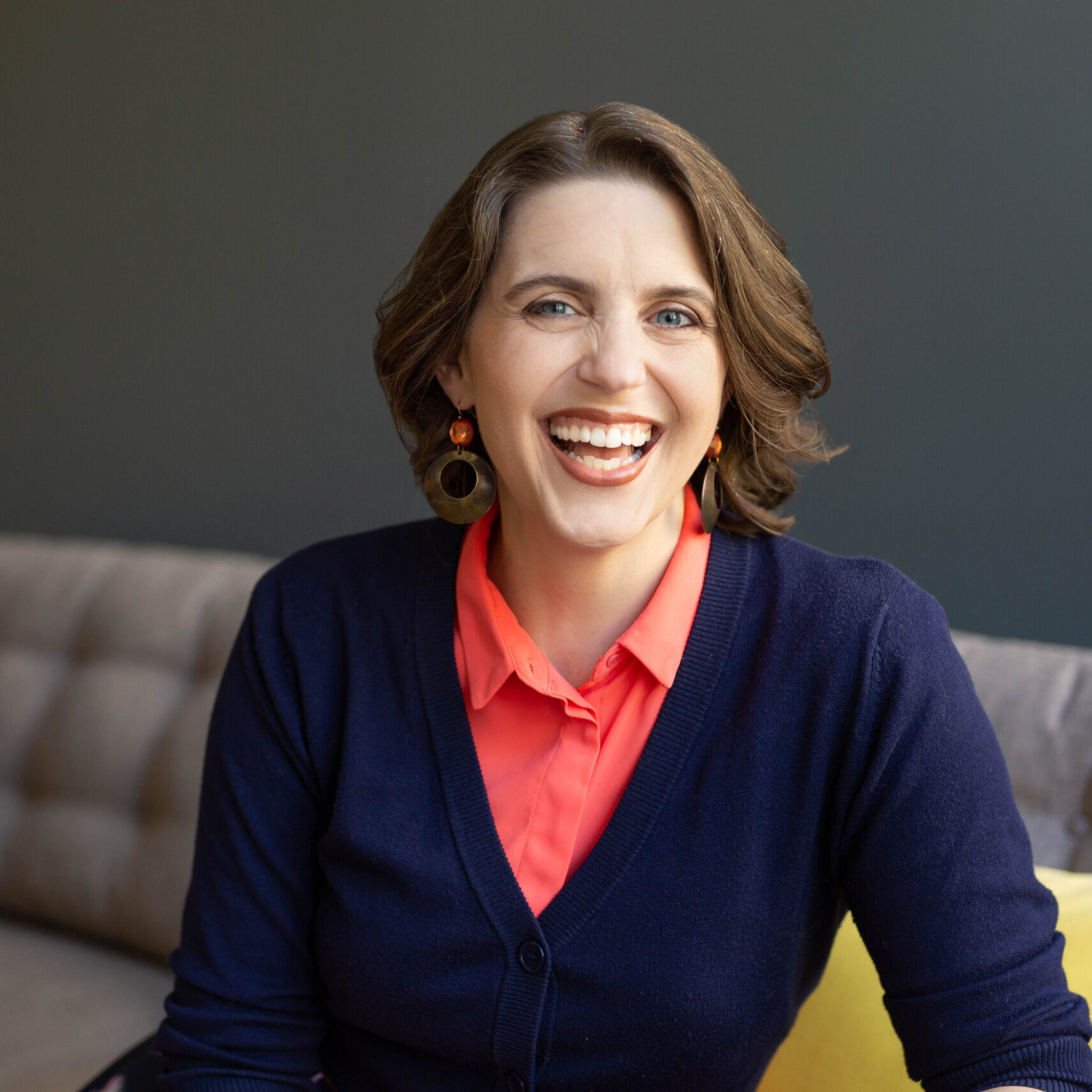If you’re reading this, you already know it’s smart to have an email list. The real question is — how do you create a Freebie that actually leads to paying clients?
The Problem with Most Freebies
The first thing to acknowledge is that most people aren’t going to hire you right after they download your Freebie. You’ll be lucky if they even read it all the way through. 😑 But the real key to a successful Freebie doesn’t lie in whether they download it, but what happens next. Does the Freebie spark an engaged conversation, or does it lead to silence?
Sadly, for many of us, it’s leading to silence. The typical sequence goes something like this: Freebie → generic 5-email sequence (thrown together by a website designer) → radio silence. Months, even years, go by without another email… and poof, that Freebie was a waste.
The goal is to spark interest in having an ongoing conversation and make potential clients want to keep hearing from you. Don’t just grab & ghost.
The Real Goal: Start a Conversation
A great Freebie should create interest and open the door to an ongoing conversation.
Let’s say you designed the living room in the photo above. You specialize in luxury modern design, and most of your clients have pets. Your Freebie could be a quick-access guide on removing pet stains from luxury fabrics — something practical and easy to keep in a laundry room.
Then, instead of ghosting your email list, you send monthly tips on caring for luxury goods. One month, it’s how to condition a Chesterfield leather couch, complete with recommendations for local pros. The next, it’s how to clean wool rugs, plus a list of the best anti-UV sprays to protect those $20,000 investments.
You’re not telling them how to design — you’re positioning yourself as the go-to expert in their kind of design. And when the time comes to hire a luxury modern designer? You’re the first person they think of.
A Freebie Formula That Works
Step 1: Nail Your Niche
Before creating a Freebie, get crystal clear on who you’re trying to attract. Otherwise, you could end up with a list full of DIYers who love your tips but will never pay for your services.
- Are you a high-end, white-glove design firm? A Freebie about IKEA hacks is not the move. But a monthly newsletter on styling high-end floral arrangements? That might attract the right clients.
- Do you specialize in mid-range kitchen renovations for urban condos? A guide comparing top-end Subzero and Liebherr fridges might feel out of touch. But a Freebie on making mid-range appliances look high-end? Now you’re speaking their language, and they’re much more likely to turn to you once they’ve saved up for their dream kitchen.
I know — it’s scary to pick a lane. But staying in the ‘one-size-fits-all’ category makes your Freebie forgettable. Want it to work? Get specific. Define who you’re helping. Speak to your ideal client so clearly they say, ‘Yes! I need to be part of this conversation.’
Step 2: Think Beyond the Freebie
A Freebie should spark the beginning of a conversation, not be a one-off gift.
Too many of us create generic Freebies like “10 Questions to Ask Your Interior Designer” and then disappear, missing the chance to showcase our Design Expertise as well as a chance to develop a potential client relationship.
Whatever weekly, monthly, or quarterly conversation you want to have with your future clients about your Design POV — that’s what should shape the initial Freebie. It should make people say “oh yes, I want to be part of THAT conversation! Make it specific to your niche (see point #1 above) and choose something that will lead to a longer conversation.
For example, if you’re a kitchen and bath designer in Southern California and you want to attract outdoor kitchen projects, a generic “Kitchen Design Trends” Freebie won’t cut it.
But a “Guide to California’s 5 Best Outdoor Pizza Ovens” followed by a monthly series of pizza recipes for outdoor kitchens? Now you’re keeping your audience engaged. Alongside those recipes share images of past clients enjoying their outdoor spaces. That’ll keep you and your designs top of mind so when they’re finally ready to build their dream outdoor kitchen, guess who they call? You!
The internet is loud — if we’re not following up, our potential clients will forget we exist.
Step 3: Connect the Dots
A great Freebie should naturally lead to your services. Think of it like a golden thread — a clear line connecting your Freebie, your follow-up emails, and your paid offerings.
- If your Freebie is about outdoor pizza ovens, your follow-up emails should probably talk about designing the perfect outdoor entertaining space, with an invitation to reach out when they are ready to create their own outdoor kitchen.
- If your Freebie is about caring for luxury fabrics, your emails could highlight real client projects featuring high-end materials and should include an invitation to hire you when they’re ready to refresh their home.
If you don’t think about how what you’re talking about will lead to them buying from you, then you’re cutting the thread and wasting the energy you put into the Freebie and email.
More simply: If you don’t make the connection between what they want and what you offer, your potential clients won’t either.
Want Your Freebie To Work?
- Nail your niche. (Hey, I have a Freebie for that! 😀 See below!)
- Create a Freebie that sparks a conversation — not just a download.
- Follow through with regular emails that continue the conversation and naturally lead to your services.
The goal isn’t just to get people on your list. It’s to attract the right people and stay on their mind. That way, when they’re finally ready to invest, they know exactly who to call!
Need help with Step One? Grab my 5-day Nail Your Niche Starter Kit — FREE! You’ll also get my Biz Bites newsletter, packed with practical strategies for building a thriving design business. 💪
[Originally published on Medium for Stuff Interior Designers Need To Know]

Hi! I’m Rebecca!
When I closed my design biz to move to Paris I discovered how hard it was for me to refer my clients to other designers because I couldn't tell what the designer did, who they did it for, or what they delivered!
Now I'm on a mission to help designers nail their niche and set clear client expectations.
It's all about being able to clearly communicate what you do, who you do it for, what they should expect, and what they'll get, and it's the #1 key to getting hired by clients you love to work on projects you're proud of!

